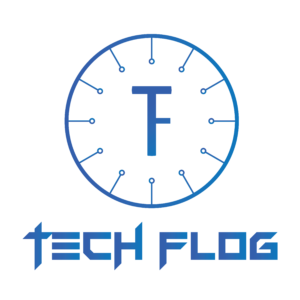The Robot Framework has emerged as a preferred choice for numerous organizations embarking on Agile and Test-Driven Development (TDD) journeys. This framework aligns well with the principles of writing functional code in response to failed tests, a fundamental aspect of TDD. Beyond its TDD compatibility, the Robot Framework is a versatile tool, accommodating acceptance testing, behavior-driven testing, Robotic Process Automation (RPA), and Acceptance Test-Driven Development (ATDD).
This framework employs an adaptable keyword-driven methodology for executing automation testing tasks. Its approach is easy to grasp, making it accessible even to individuals without prior programming experience. This attribute proves valuable as it obviates the need for intricate programming skills when starting with the Robot Framework.
While the Robot Framework is constructed in Python, it isn’t confined to this single language. It facilitates the creation of keywords using various programming languages, including Java, Python automation framework, JavaScript, .Net, Perl, and PHP. Python boasts a Robot Framework extension that collaborates with external libraries such as Selenium for web testing.
In this blog, we delve into various test cases and assorted terminology intrinsic to utilizing the Robot Framework in conjunction with Python.
What is Robot Framework?
Robot is a comprehensive and open-source automation framework that spans robotic process automation, acceptance testing, and acceptance test-driven development. It distinguishes itself through its utilization of a keyword-driven strategy for testing. The framework’s versatility is evident in its ability to harness test libraries crafted using Python or Java, significantly broadening its potential applications.
- Presenting itself as a generic test automation framework, the robot framework with Selenium Python is tailored for acceptance testing purposes.
- Embedded within its core is the philosophy of Acceptance Test Driven Development (ATDD), a principle it embodies.
- At its heart lies the internal adoption of the keyword-driven testing approach, underscoring its efficacy and convenience.
- The Robot Framework provides test libraries thoughtfully implemented in Python or Java. Users are empowered to craft new higher-level keywords by building upon existing ones, using the same intuitive syntax in creating test cases.
- Remarkably, delving into the Robot Framework necessitates minimal programming knowledge, making it extremely accessible to a wide variety of diverse users.
The collective functionalities provided by (Cucumber + TestNG) are encompassed within this framework. Within this framework, an array of libraries is already integrated, streamlining the process of crafting automated tests while minimizing the need for redundant code writing. Moreover, using the Python programming language opens avenues for developing custom libraries.
However, the framework’s scope extends beyond mere libraries. Empowered by this resilient automation platform, the ability to automatically generate comprehensive HTML reports, log data, failure screenshots, and numerous other elements is at your disposal, all achieved without necessitating the creation of any code lines.
Performing Automation testing with Robot Framework and Python
Various phases involve automating testing with Python and the Robot Framework. An accessible, keyword-driven test automation framework like Robot enables you to construct test cases easily. Python enhances Robot Framework’s functionality and develops unique libraries or keywords. Here’s what you must do:
- Install Robot Framework and Python automation framework
- Create a Test Project Structure
- Write Test Cases
- Create Custom Keywords
- Execute Test Cases
- View Test Results
- Integrate with Version Control
Remember that this is only a brief introduction to setting up and running tests using Python and Robot Framework. The framework includes several built-in libraries for various playwright testing jobs, such as SeleniumLibrary for web testing and DatabaseLibrary for database testing. You can investigate these libraries and further adjust your test automation configuration to suit the requirements of your project.
Components of Robot Framework
What does the concept of keyword-driven testing entail? When the term “keyword” is employed, it denotes a function or method. This concept’s remarkable and formidable aspect is its capacity to establish a hierarchy where a single keyword can be defined by leveraging other keywords, creating a chain of connections. This phenomenon prompts us to deliberate on the following categories frequently:
- Higher-level keywords: These encompass keywords that intricately examine specific facets of the business logic intrinsic to the system undergoing testing.
- Lower-level keywords: To maintain a reasonable scale for implementing higher-level keywords, there’s a tendency to deconstruct the requisite functionalities into several lower-level keywords.
- Technical keywords: These keywords are responsible for furnishing the technical groundwork for accessing and subsequently testing the system.
What Data Can Robot Framework Produce
When initiating a Robot Framework test within the pCloudy Cloud environment, users encounter a seamless process without requiring extensive modifications to their test runs or job configurations. The execution of test automation retains its customary flow, analogous to the operation of any other framework. Swift access to outcomes is assured across a spectrum of Android and iOS devices.
The procedure is straightforward for those embarking on their test automation journey with pCloudy and opting for Robot Framework. After setting up a project specific to Android or iOS, the subsequent steps entail uploading the application (APK or IPA), introducing the test package, and handpicking the desired devices for the test run. In just a few minutes, the test run culminates, contingent upon the length of the test cases. Post-execution, the requisite data can be promptly retrieved from the test run, ensuring a seamless experience.
Advantages of Robot Framework
- Installation and usage are user-friendly.
- As an open-source framework, it accommodates individuals of all programming backgrounds.
- Its compatibility spans diverse operating systems and external libraries like Selenium.
- Test case construction aligns with behavior-driven, keyword-driven, and data-driven methodologies within the robot framework with Selenium Python.
- Test case composition can transpire in any Robot Integrated Development Environment (RIDE) or text editor.
Disadvantages of Robot Framework
- Limited parallel test execution capability.
- Crafting customized HTML reports is not a straightforward process and may need some attention.
Limitations of Robot Framework
Robot Framework does not support constructs like if-else statements and nested loops, which become essential when dealing with intricate code structures.
Conclusion
The Robot Framework is an open-source framework for automating tests, catering to acceptance testing and acceptance test-driven development. Within this framework, test cases find their foundation in keywords presented in a tabular format. This format not only enhances clarity and readability but also illuminates the authentic intentions behind each test case.








